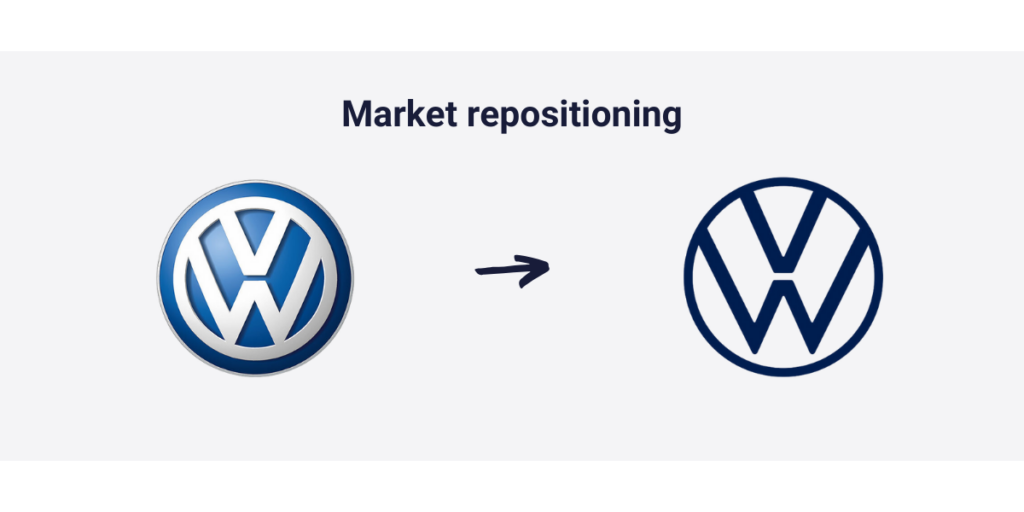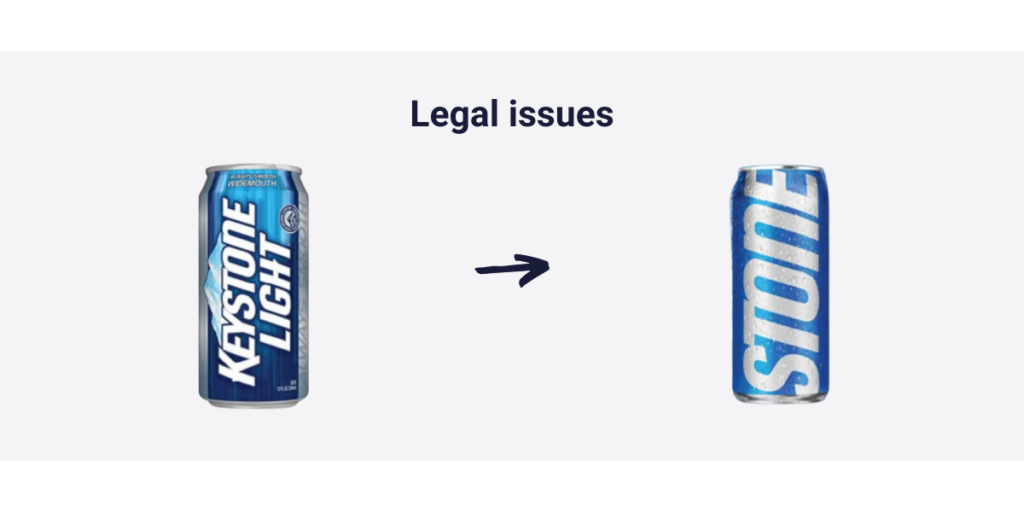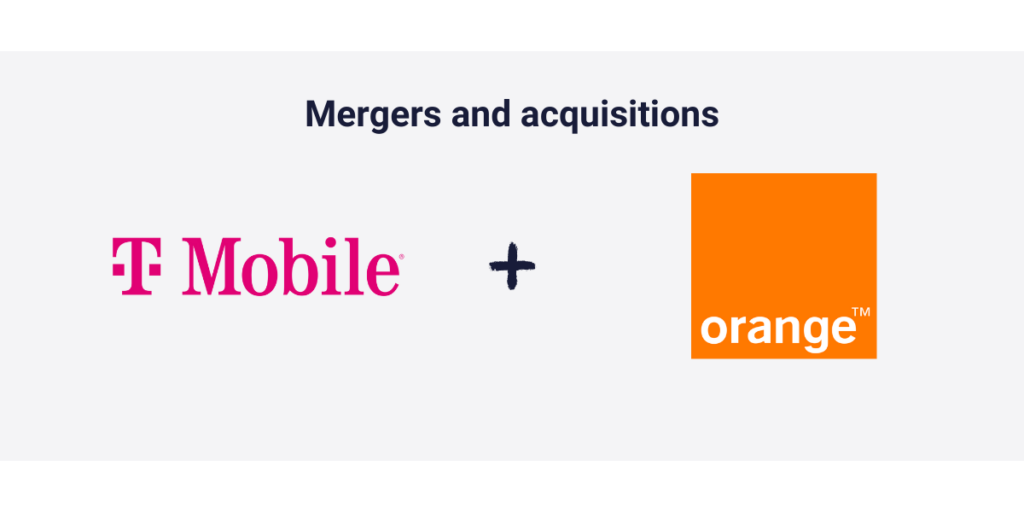Rebranding is one of the hardest challenges a company can ever face. And the thing is: most companies will ever experience it once in their whole lifetime, that’s why it is hard to learn from our own experience.
When you introduce your product in new regions or countries, and the first attempt does not go well, you still have plenty of other opportunities to seize it. Unlike in this case, where rebranding demands huge resources that you only afford once.
If you miss it, you probably never go back on track.
That’s why we write this article. When you find yourself in a rebranding situation, we teach you to know what you are doing and solve the situation correctly.
Moreover, this article will contain some industrial examples to look at real-life experiences and solutions.
But, let’s start at the very beginning. What do we call a “brand”, and what is rebranding?
Table of Contents
What is a brand?
A brand is not just a product, a service, or a concept. The thing is, it can be any of these, but that’s not why we refer to them as a “brand”. Brands have recognizable identities, which distinguishes them from the other competitors.
Let’s put it in an easy example.
Here are Coca-Cola and Pepsi. Both sell the same product: the cola.
But we still distinguish these two companies from each other, why is it? It’s because they want to be distinguished since that’s how they can have more sales than the other one.
If both companies look the same, they would just only compete with each other on their prices. To get more revenue Coca Coca-Cola would need to define lower prices than Pepsi, then Pepsi would need to define lower prices. That would go down to a point, where they can not go lower, as their marginal cost would be higher than their marginal revenue.

Defining a brand has a lot of advantages:
- Brands can establish loyalty amongst their customers
- Brands can differentiate their products from others
- Customers can identify and recognize your products
These pros will all let you define higher prices than your competitors, without losing most of your clients.
But what are the elements of a brand?
- Brand positioning
- Verbal identity
- Visual identity
- Competitive advantages
- Value proposition – how would your brand serve the unique needs
- Brand promise
- Brand personality – how would your brand look like as a person
- Brand architecture
- Brand compass – purpose, mission, vision, values
- Brand archetype
As you can see, almost anything.
What is rebranding?
Now that we have already met with the basics of a brand, we should move forward to rebranding.
Rebranding needs two separate things to occur:
- an existing brand
- an objective to change
According to the Economic Times: “Rebranding is the process of changing the corporate image of an organization.”
It can include the change of any of the mentioned brand elements, more than one, or all of them.
When is it essential to rebrand your company?
Sometimes it is, sometimes it is not. It all depends on the actual situation.
In this chapter, we try to share all of those situations when a well-built rebranding can have a positive impact on the company itself. All of these types will contain a real-life example that helps you understand the whole mechanism behind it.
We sort 5 different cases, where rebranding can be essential, however there are some more cases that this opportunity can solve. But be aware, that most of the time rebranding needs many resources, unlike other possible solutions that do not.
So always monitor that you really need a whole new rebranding. If the answer is “yes”, let’s see its types:
1. Diversification or extension
This type of rebranding can occur, when the company enters new markets or industries, and the company’s brand is no longer enough to cover the updates. In these cases, rebranding can avoid confusion amongst customers, and it can help to communicate these changes effectively.
Facebook to Meta
We can easily connect Facebook’s (or Meta’s) rebranding as a type of diversification.
Mark Zuckerberg, the founder of Facebook, has spoken a lot about one of his dreams in the last couple of years: he wants to create a whole metaverse, a virtual world where people can spend most of their time.
I don’t know how many of you read Ready Player One, but that book really follows Zuckerberg’s dream.
But the real meaning: Facebook’s rebranding to Meta is not just about financial reasons, (2021 was a negative year of Facebook with many scandals) it’s about extending the industries they participate in.

2. Market repositioning
The general need for rebranding. If the trends and customer behavior are going further from your company’s values and propositions, there’s nothing you can do, other than a painful rebranding.
In this case, your main purpose is to be in the circle of the customers’ needs again, even if it means a complete restructuring.
Volkswagen and the new trends
Volkswagen’s new calendar started in September 2019, when the whole company made a 180° turn.
The reason? Less sellings, decreased interest from buyers, a lack of innovative ideas, and most importantly: less revenue.
That’s why they introduced their new slogan, called “The New Volkswagen”, which tries to resonate with the new trends. Climate-friendlier cars, neutral carbon balance, and becoming the most sustainable automotive brand; these are their new goals, visions, and missions.

3. Legal issues
Sometimes rebranding a company is not a possibility, rather than an obligation. Cases occur, when – after introducing the brand at a global level – the name or the logo of the company has a similarity with another one.
In these scenarios, after a long law case, one of the companies needs to change its brand a little.
Keystone light against Stone Brewing
This whole story started in 2017, when Keystone, a big beer producer company, rebranded one of their products, named Keystone Light. This wasn’t a problem until they did not change the graphics of the cans.
But they did, and the whole situation escalated quickly: “Key” moved to the side of the can, and the word “Stone” remained in the middle. Stone, a Californian-based craft brewery didn’t like the idea, as it was very similar to their own beer.
They went to court, as they claimed: “This change confuses the customers”. Eventually, they won the lawsuit, Stone awarded $57 million in damages, and Keystone needed to rebrand their “light” beer again.

4. Mergers and acquisitions
The less likable type of rebranding. Here, usually, two companies become one legal entity.
There are two scenarios:
- the one that acquires the other keeps its brand, and the other will run under that brand
- the two will become a third brand
Either of these solutions you will use, prepare for the worst: these rebrandings have a minimum failure rate of 50% according to Investopedia.
The merger of T-Mobile and Orange
This is a little older story than the others, and not that relevant nowadays, but we can still understand the whole procedure from this example.
In 2012, two big companies T-mobile (one of the biggest telecommunication companies), and Orange (a French telecommunication company) merged to create something unique.
“Everything Everywhere” the merged company, was born to open at least 100 retail outlets and share more Wi:Fi hotspots across the whole of Britain.
Back at the time, this was the only company that ensured 4G internet access across Britain, but the breakthrough did not come. However, throughout the years Everything Everywhere became a stable point of the market, and the business that had valued £8.5 billion combined in 2012, sold at £12.5 billion five years later.

5. Outdated picture
There are some examples when your sales – from one minute to another – start to decrease. There can be several reasons for that, but after a long research, you realize that the customers find the brand old, and plain.
To change this negative wave, one of your options can be a whole new rebranding. Here, you need to categorize your brand through your new logo, slogan, or name to be a more young, energetic, and trendy company, without losing most of your remaining clients.
It’s not an easy task, at least we can tell that.
But sometimes, this is the only effective way out.
LEGO’s success story
In the first years of the 21st century, “LEGO, the well-known company, found themselves in a very awkward position. Because of the decreasing revenue and the increasing costs, they almost hit rock bottom.
The company’s lack of innovation and poor financial management are all were the reasons for this negative spiral.
At the very last moments, LEGO’s board brought out two crucial ideas:
- a collaboration with digital game developers
- and introducing new digital design tools
The result: Success! LEGO has finally recovered from the negative shock and remained one of the market leaders in terms of toy manufacturing.

Risks of rebranding a company
As I already mentioned, rebranding a company is not something you like to do. Businesses use this method as a last hope, or the least worst, but it is not a daily routine.
Why? Because rebranding is terribly expensive most of the time.
But, what if we ignore these money-related issues for a minute? Well, the situation is a little better now, but rebranding still has some risks.
Let’s think with the head of a loyal customer. There was a product that he really liked, and now it changed. But we can’t be sure:
- that the customer finds the product again on the shelves with the changed interior design and advertisements
- that they will pay the same price for a brand they don’t know anything about
So it sometimes creates uncertainty and confusion amongst potential buyers.
And they are just one slice of the problem.
Contracts and obligations with suppliers, the media’s reaction, the possible attitude change of your brand’s personal relation, stuck old products at the retailers. If one of these parts goes wrong, the success of your rebranding strategy becomes completely uncertain.
That’s why you need to establish a plan first.

What are the steps of creating a good rebranding strategy?
To rebrand your company, you need to deeply understand the whole process, and prepare months before the actual rebranding.
We picked out five key steps that are crucial to establish your brand new company!
1. Define the objectives
There are some questions here you need to think about with your colleagues, or business partners.
- Why did the last brand not achieve your goals?
- There is no other route other than rebranding?
After you answer these questions, you are ready to define your new-coming objectives.
Here, you need to compare your last goals to the new ones. Probably, you have already analyzed your mistakes, now learn from them, and define more realistic goals.
After the idea of a huge rebranding, goals can completely change for several reasons. Other target groups, other sales prices, other product specifics, et cetera. As you can see, these factors can change, but an actual rebranding does not always lead to the change of these factors.
You need to take a look at your vision, mission, and values. If your purpose of the rebranding is to replace your target groups and move the brand into a completely new way, it’s time to urgently change these things.
Moreover, if you didn’t define those last time, rebranding is a great opportunity to define those, to be in synergy with your upcoming goals.
2. Meet with your target audience
After you define your objectives, it is time to move into your target audience.
You need two separate things:
- target audience(s)
- finding ways to connect with them
Actually, it is harder than you first think, but it all depends on the type of rebranding you are trying to establish.
If you have legal issues
If it’s just about legal issues, you can skip this step, as your target audience is given, you just need to re-gather them across your new name, or logo.
If you diversify or extend your business
But if you want a market repositioning or diversification, you need a total change. In these cases, the marketers use a competitive matrix first, where you can describe your competitors. This matrix is a good way to analyze the industry, and after that, you can differentiate yourself from the competitors.
It is crucial to find those market segments that fewer companies satisfy but still can be profitable for you.
If you want to target new audiences
Same when you try to find target audiences with your new brand, you need to define the basic demographics, just as:
- Location
- Gender
- Age
- Financial status
- Educational background
But we think you already knew that. However, in a rebranding process, you need something more.
You need to discover how you can engage your old and very loyal customers, without causing a long complaining period.
3. To throw or not to throw
This phase is all about deciding what elements you will throw, and what will stay with you.
What are those factors that it depends on?
- your new-coming objectives
- the competitor analysis you make
- the market research you make
- how your old customers may react to certain changes
- your budget
- your brand’s history
- risk tolerance
But how can you be sure that your old customers liked something? Since, most of the time there’s not a single research, for example, which parts of your website were practical to use, and which not.
Use a website analytics tool
That’s why you need an online analytics tool first. These tools are ready to help you understand your visitors, and potential buyers better to establish a better user experience later.
And you can gain advantages from these tools in a rebranding period. You can analyze where they clicked, what were their most common routes, or at what page they exited your site.
This information is crucial to understand what parts of your website are eager for a change.
If you need a web analytics tool, we are happy to recommend you Capturly Analytics, one of the most powerful tools in the market. With Capturly, you can analyze heatmaps, record sessions, create conversion funnels, or make surveys; all for knowing your customers better.
Capturly Analytics is not just one of the most in-depth analytics across the internet, but we wait for you with friendly prices to ensure a positive atmosphere around our company.

4. Create your new visuals and messages
This is one of the longest parts of this process, yet we can only write a few words about it.
Why is it? It’s because neither I nor anybody knows more about your brand than you. All we can say is that your visuals and messages must be coherent with your new target groups, target markets, and goals.
That’s the external part of this process.
But if your brand’s internal parts also changed during the rebranding process, your new visuals must follow those changes as well.
For example: if your brand’s color changed from green to blue, the background of these visuals should also be coherent to this decision.
5. Promote and monitor
After you are done with all the previous instructions, that’s not much left other than spending money to advertise yourself.
It is a very tough task to deliver your messages to your old customers, but they also need to be notified about your change. This clarification is important to avoid general misunderstanding and hate.
But you also need to advertise your brand to your new target groups. Do not forget: you start from the beginning, so it is a long process, even if you have an infinite budget.
When this whole campaign sails across the whole world, do not miss one last single step: the monitoring of its success.
If something goes wrong, and you react too late, there’s no turning back. Measure how your new and old target groups react to your change, and do not be afraid of a little criticism. There’s no way you can avoid it.
Conclusion
In this article, we walked into one of the most controversial areas of marketing, that’s called rebranding.
Even though many marketers criticize this decision from time to time, sometimes there’s no other option. That’s why I always tell the public to use this option as a last call and take your time to think a lot about the whole operation.
A well-established strategy decreases the chances of the failure of your rebranding and provides you with solutions if something goes wrong.
So when you need to rebrand your company next time, don’t forget the steps!

Don't forget, sharing is caring! :)

